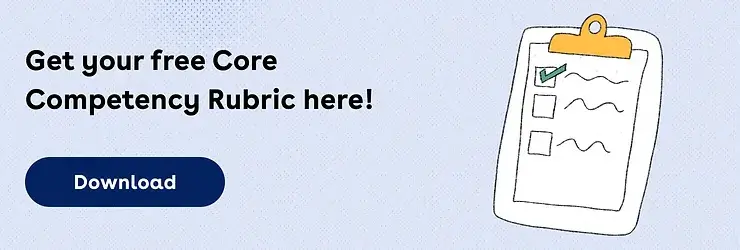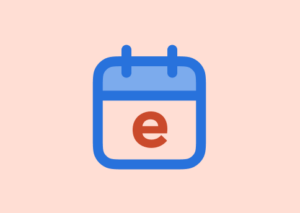Hiring your first Head of People Ops is both very hard and very important. As a founder or leader of a scaling company, you have personally owned all things people, culture, talent and performance. You feel very strongly about these things and want to give them a good home. (Even figuring out when to hire your first Head of People can be a difficult process.)
Another challenge is that you’re hiring a people leader without a people leader (obviously!) so you’re relying on an early iteration of your hiring process which is probably scrappy and has “room for improvement.”
When my co-founder Anne and I began our hiring process, we didn’t yet know what a great hiring process looks like (at least, not as well as we see it now), and with a much leaner org, we didn’t have the support and guidance of an in-house Talent team. But, through a combination of luck and skill, we did end up hiring a stellar VP of People, Melanie, and we’re sharing the lessons and resources that got us there with the hope that they help you find your own Melanie (you can’t have her though!). In this post, we’ll walk through our hiring process for our first People Ops hire, step by step. You can also download our People Ops hiring materials, including a core competency rubric, take-home assignment and on-site interview guide with the link below.

Step 1: Know what you’re looking for
There are a number of great reasons to hire your first Head of People, so you’ll need to make a prioritized list of criteria to fill for your ideal candidate. Here were the criteria we used when beginning our search:
We needed a Head of People Ops who could . . .
- Set up the processes for all our key infrastructure needs – like structured benefits, compensation, and recruiting, among other things.
- Ideally, be someone capable of coaching leaders and teams where necessary and offering strategic insights as we entered into growth mode.
(I’ll note here that, if you’re a subscriber to my newsletter, A People Person, you’ll know that I truly didn’t understand all the opportunities and gifts a great People leader can bring to a new org. If you think you might be in that camp, too, I suggest you reach out to some great People Ops leaders to get a better sense of what great looks like.)
In other words, our team was looking for someone who had the necessary leadership experience working with high-growth startups and the wisdom to help us make the right decisions, but we also needed someone who was willing to do the tough job of laying the People Ops groundwork our startup so desperately needed. If you’re looking for someone similar, be very honest in your job description. Say, “you will not immediately have headcount and will need to run all the systems yourself at first.” This is important so you have aligned expectations.
Additionally, we took the time to survey our Senior leadership, running through a couple exercises to determine what skill sets our team needed most out of our first People leader. Ask your team what they want out of a people leader. You won’t be able to meet everyone’s needs, but it’ll help you understand whether hiring or, say, internal training is top of mind.
Step 2: Figure out whether you want to use a recruiter
This may be one of the easier decisions in your hiring process, depending on your hiring budget. External recruiting teams come at a cost, but they give you access to an amazing pool of talent and free up a lot of your time when you don’t have an internal talent team.
If you don’t already have a preferred Talent resource, I recommend Guild Talent, whom we used for our Head of People Ops hiring process.
Step 3: Draft your interview plan
Below was the interview plan we used for our process:
Resume Review
Our main focus here was on finding the specific skill sets we needed for the role (see: Step 1). We were also screening for experience in high-growth startups because working without resources and at a fast pace is a skill set of its own.
Intro Call (30 mins)
Have an intro call with prepared talking points. In our case, I had the candidate walk me through their experiences to get a better understanding of what they did in each role. I made sure to ask about what energized them at work and what they felt their opportunities for growth were.
Take-Home Assignment (24-hour deadline)
Our take-home assignment constituted the first half of our core competency assessment and was designed as a primer for our onsite interview.
By the way, if you’re interested in seeing the full take-home assignment, as well as the rubric we used for our core competency assessment, you can download it here.
In the take-home assignment, we asked for concise answers to a few hypothetical HR-related scenarios, below are the first two questions in that worksheet:
1. One of Ethena’s earliest employees, a product designer, is struggling to scale with their role. They’ve been with us since our early days and are a key part of the team, but their skills haven’t scaled as fast as their responsibilities have. Their manager has discussed their performance issues with them in weekly Feedback Fridays for the past month, but their performance isn’t dramatically improving.
- What questions would you want to ask their manager in order to help coach them?
- If this eventually required a termination, what materials would you prepare before having the conversation?
2. Let’s say that you hear from another leader that some of our team members don’t like our health insurance plan and other benefits. How would you go about diagnosing the problem and providing solutions?
Candidates were encouraged to be concise and direct with their answers, especially since we only gave them 24 hours to send it back to us. Our goal was on quality of answers rather than quantity, plus, we minimize the amount of time candidates need to spend. Not everyone has hours of “free” time.
Leadership Interview (30 mins)
For our Leadership Interview, we used the same standard Leadership interview we give to anyone interviewing for a role with a direct report. (We’ll be sharing more on this soon on the blog – stay tuned!)
On-site Interview (75 mins)
The On-site Interview built off of the questions in our take-home assignment, focusing on roleplay, live feedback, and following up on the key attributes we were measuring in our rubric.
Following up on the take-home assignment:
My co-founder and I asked probing questions based on the candidates’ answers to their take-home assignment. For the first question on the take-home – a hypothetical performance issues situation – we asked each candidate what information they saw as most pertinent to the situation and why they offered the suggestions they did for both coaching and termination.
Role-play:
We utilize role-plays, especially in our leadership interviews, because it’s the most efficient way to really see what it’s like to work with someone. “Tell me how great you are at something” is very different than, “show me how you do this thing.” . (Fun fact – role plays are really helpful in internal training too! Check out Melanie’s post for more on that.)
In the case of our People Ops role-play, we followed the conversation on dealing with employee performance issues with a role-played termination, seen below:
[10 mins] Role play: one interviewer is the design team hire who needs to be let go, another is the manager. Interviewee is Head of People. Live feedback to follow role play.
Live feedback:
If you’ve already taken a peek at our downloadable rubric, you’ll notice that one of the main attributes we tested for in each candidate was their openness to feedback. Did the candidate get defensive or make excuses? Did they ask us follow-up questions? Were they curious about our point of view on the matter? This is something we tested for all along the interview.
Step 4: Create an interview rubric
Create a rubric that reflects the attributes you’re looking for in the ideal People Ops leader, and keep it on-hand throughout the interview process as you get to know the candidate.
Need a place to start? We’ve got you covered with a downloadable rubric. Check it out by following this link!
Finding your person
At the end of the interview process, you’ll likely want to designate time for open Q&A, giving the candidate a chance to get to know your team better. Note that it’s important that you’re also “selling” the candidate on your company throughout the interview. Don’t wait until you’ve extended an offer to do this!
If you’re lucky enough to find the perfect candidate for this role, you may even need to make a grand gesture (like going to Jersey) to show, not tell, the candidate how excited you are to work together.
After we extended our offer to Melanie to join us, I took the PATH train for the first time to meet Melanie in New Jersey where she lives.
I hope this helps you find your very own people leader so great that you too are inspired to travel to Jersey or wherever they may live!
Ethena is a modern compliance training platform that delivers current, cringe-free content that employees actually enjoy. Our training brings complex issues to life through thoughtful real-world examples, dynamic multimedia, and actionable next steps. Talk to a member of our team to see if Ethena is right for your company.









